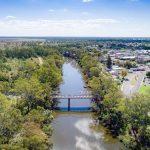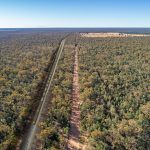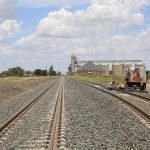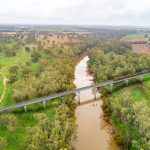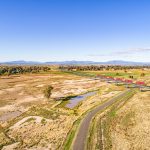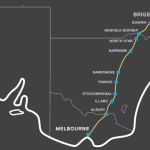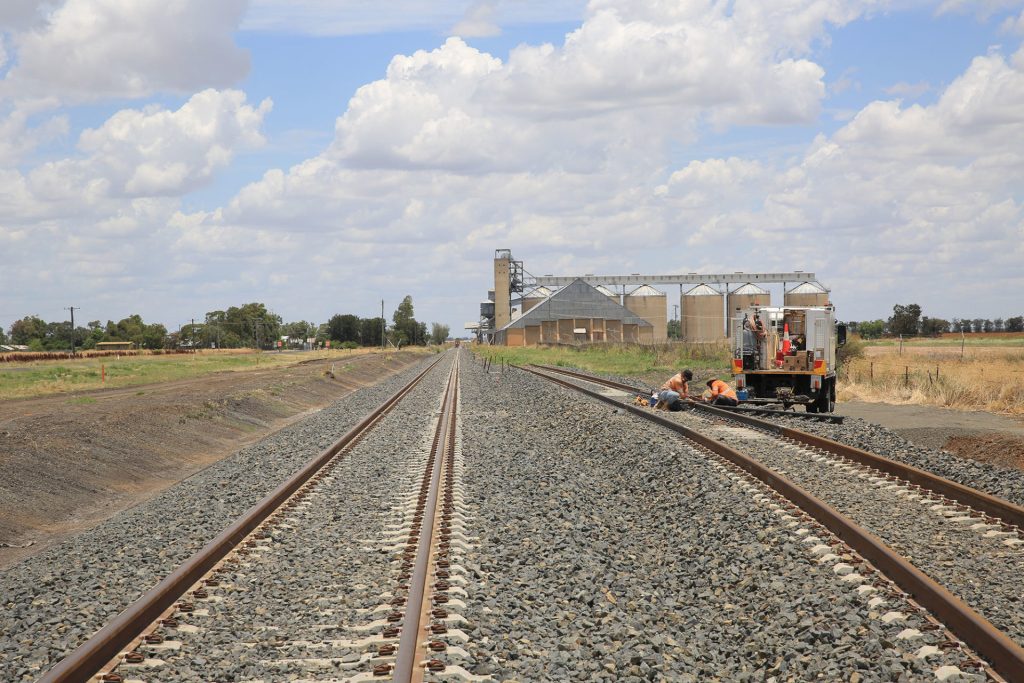 The Australian Rail Track Corporation (ARTC) received approvals for Inland Rail in NSW projects including the Narromine – Narrabri and the North Star to NSW/Queensland border sections.
The Australian Rail Track Corporation (ARTC) received approvals for Inland Rail in NSW projects including the Narromine – Narrabri and the North Star to NSW/Queensland border sections.
On February 23, the New South Wales Ministry for Planning granted ARTC the approval for Narromine – Narrabri project, subject to conditions and Federal Government approval. This project which is the longest stretch of new line comprises 306 km of new tracks enabling freight trains to connect with the section of Inland Rail under construction between Narrabri and North Star and the completed Parkes – Narromine section that supports freight transport to Adelaide and Perth. This line is situated in mid-north western New South Wales.
Prior to construction, members of the project team and the construction contractor Acciona and CPB Contractors Joint Venture (ACACPB JV) will continue to undertake surveys and geotechnical investigations along the proposed rail corridor. In 2021 the joint venture was appointed as the preferred proponent for the Southern Civil Works Programme covering the new single track line extending from Narromine to Narrabri in north west New South Wales, which is one of the three missing links of the corridor in the NSW.
The current design features 49 new public level crossings, 75 new bridges and viaducts and 7 crossing loops, each up to 2.2 km long.
The North Star to NSW/Queensland border section also obtained approval from the NSW government and consists of upgrading approximately 27km of non-operational rail corridor and constructing 12 km of new track across the Macintyre River, allowing for future connections to Goondiwindi and the broader region. The section follows the existing track north from North Star before crossing Bruxner Way and the border to join the existing Queensland Rail line. The section includes approximately 30 km of track in NSW and 9 km in Queensland. While the NSW section of the project has received State approval, the 9 km section of rail in Queensland will be considered as part of environmental approvals for the NSW/ QLD border. The entire 39 km section of Inland Rail connects North Star in New South Wales to the Queensland Rail South Western system on the NSW/QLD border. The project’s draft Environmental Impact Statement (EIS) was released for public exhibition and comment by the Department of Planning and Environment in 26 August 2020 for 42 days. The project is currently in the reference design stage and ARTC is conducting various studies and consulting with landowners and other key stakeholders to better understand potential issues and opportunities around the Macintyre River crossing.
Comprising 13 individual projects, Inland Rail in NSW includes 7 projects and the first project covering 103 km between Parkes and Narromine was put into operation in September 2020.
Meanwhile the BHQ Joint Venture (BHQJV), the contractor for the Gowrie – Whetstone section and Laing O’Rourke Queensland, the contractor for the Whetstone – NSW/Queensland border are continuing the works with a range of geotechnical surveys in the project area and work is progressing on the project revised draft EIS for submission to Queensland’s Coordinator-General (CG). The NSW/Queensland Border to Gowrie section includes 138 km of new double-track and upgrade works on a 69 km section from the New South Wales/Queensland border, near Yelarbon, to Gowrie Junction, north west of Toowoomba in Queensland. The entire line will be 216 km long with 34 bridges, and five crossing loops which will accommodate double stack freight trains of up to 1800 metres long. The works have a value of AUD 1.4 billion (USD 942.2 million) and is expected to be completed in 2026.
At the beginning of February, ARTC started the upgrade works in Victoria for the 305 km Tottenham – Albury rail section linking Melbourne metropolitan area with the NSW border at Albury-Wodonga.
The 1,700 km Inland Rail will provide connection between Melbourne and Brisbane crossing Queensland, New South Wales and Victoria. The construction works for the rail freight corridor started in 2018 and its completion is scheduled for 2027.
Share on:



